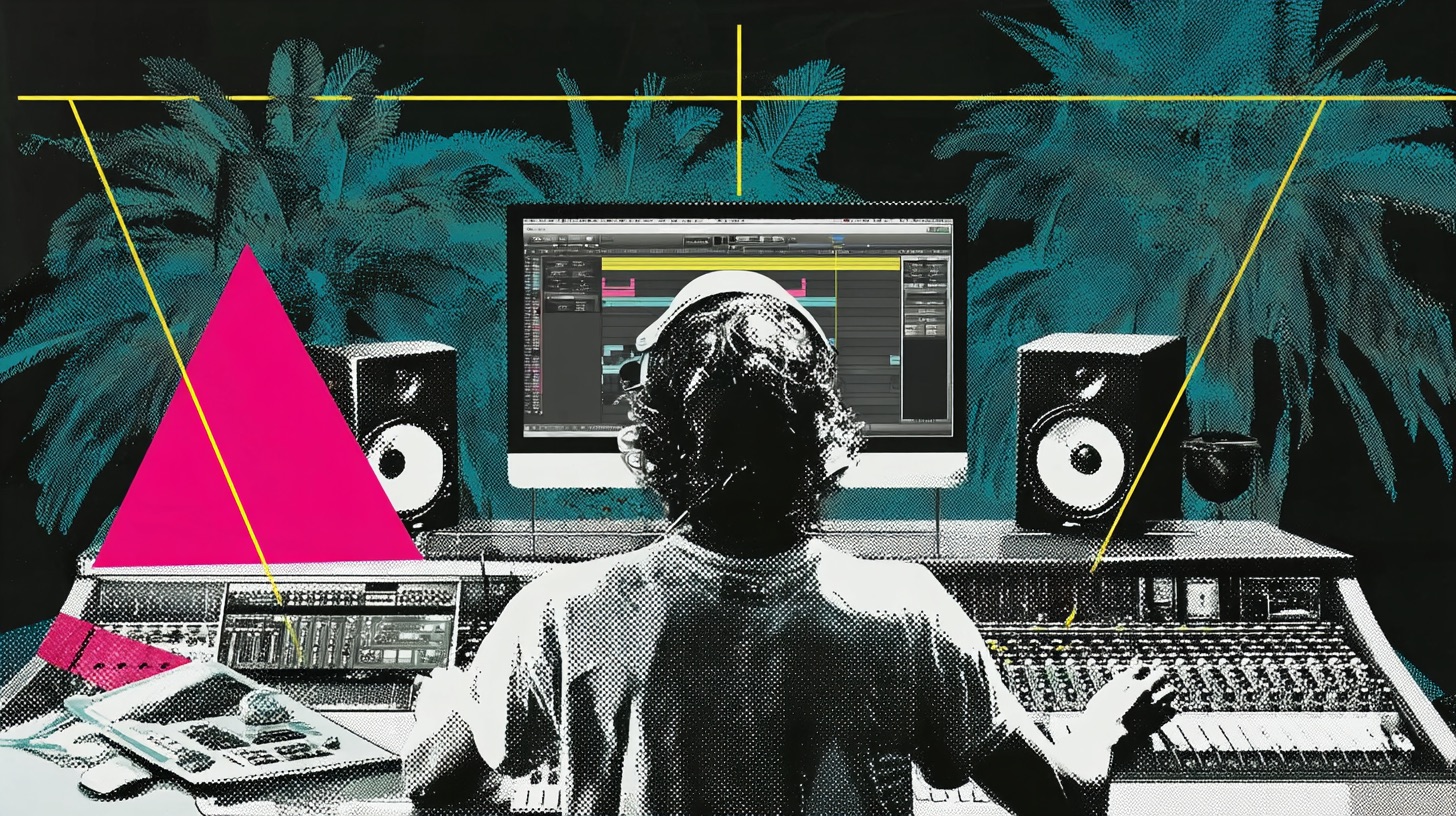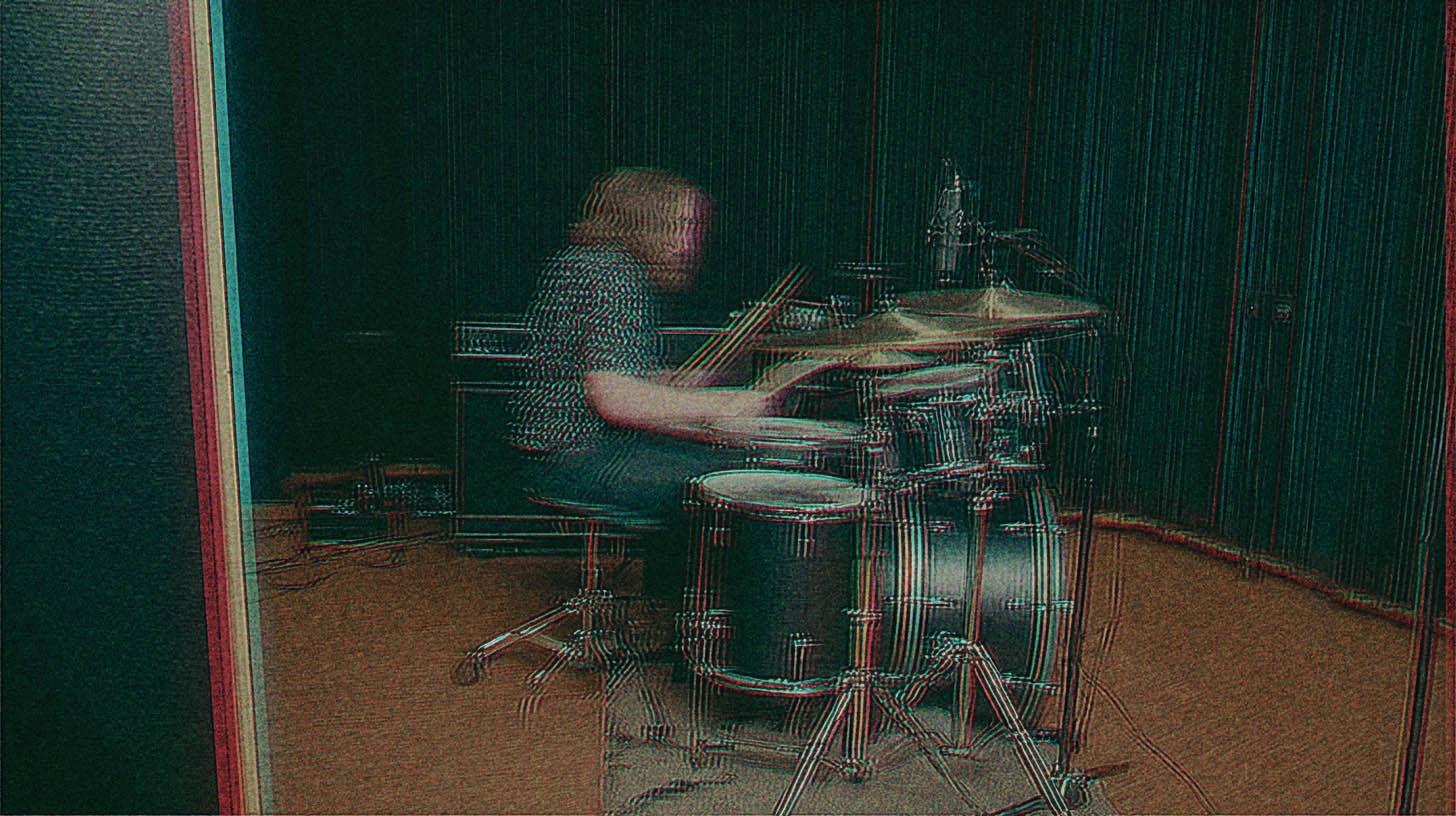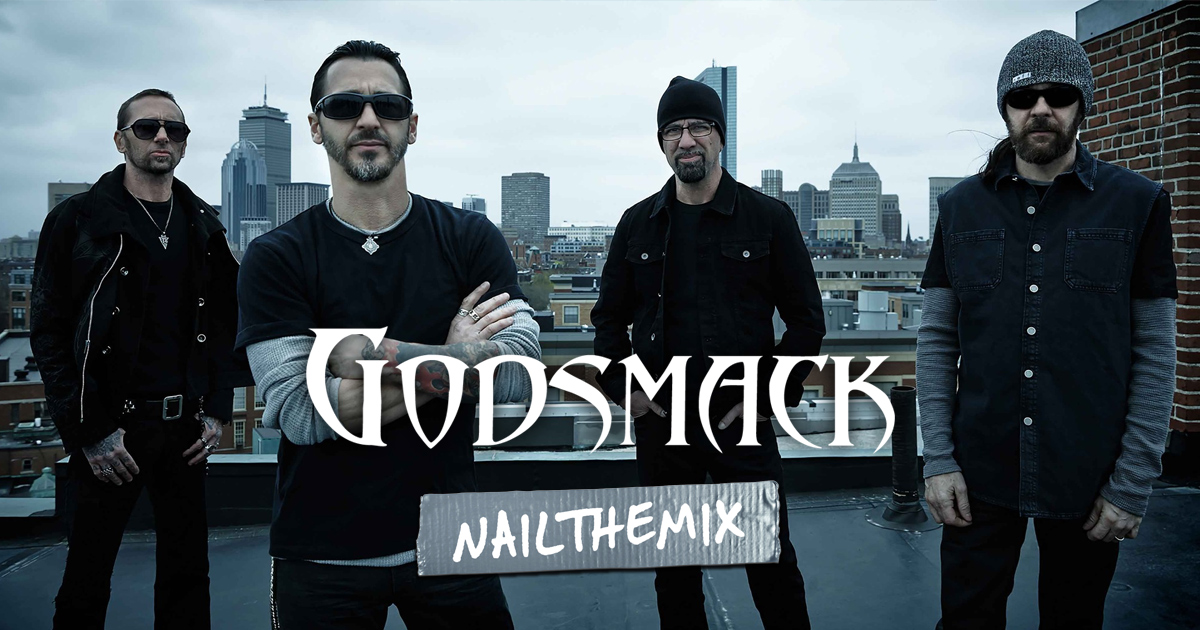
Logic DAW for metal: Can it handle a truly heavy mix?
Nail The Mix Staff
Alright, let’s talk Digital Audio Workstations, or DAWs. It’s the command center for your entire production, from tracking those initial riffs to laying down the final blistering solo and mixing it all into a face-melting masterpiece. The big question always comes up: does it really matter which DAW you choose for metal?
Well, yes and no. The truth is, modern DAWs are incredibly powerful. Whether you’re rocking Pro Tools, Cubase, Reaper, or Logic Pro, you can make killer metal. They all have the core tools. However, they definitely have different strengths, weaknesses, and workflows. Once you get locked into one, switching feels like learning a new instrument – doable, but a pain. So, my advice? If you’re starting out, demo a few. See what clicks. Don’t just grab what your buddy uses. Your workflow is your workflow.
Now, let’s zoom in on a popular contender, especially in the Mac-verse: Logic Pro. Is this Apple-centric powerhouse ready to tackle the demands of modern metal production?
What’s the Deal with Logic Pro as Your DAW?
Logic Pro has a pretty solid reputation. It’s known for being a complete package, offering a lot of bang for your buck with a one-time purchase. But like any DAW, it’s got its ups and downs, especially when we’re talking about the high-gain, high-precision world of metal.
The Good Stuff: Logic’s Strengths for Metal Producers
Logic brings a lot to the table for metalheads:
- Solid Audio Recording & MIDI Capabilities: For tracking guitars, bass, and vocals, Logic is perfectly capable. Its MIDI implementation is also top-notch, which is crucial for programming realistic drums with samplers like Toontrack Superior Drummer 3, GetGood Drums, or Steven Slate Drums 5. Writing intricate synth parts for symphonic metal or industrial elements? Logic’s got you covered with powerful tools and a user-friendly Piano Roll editor.
- Killer Stock Plugins: Don’t sleep on Logic’s built-in arsenal!
- Channel EQ: This is a surprisingly versatile EQ. Its built-in analyzer is great for the kind of surgical equalization needed to clean up a dense mix. Try a steep high-pass filter (HPF) on guitars around 80-100Hz to clear mud and a low-pass filter (LPF) around 8-10kHz to tame harsh fizz before you even reach for something like a FabFilter Pro-Q 3.
- Compressor: Logic’s Compressor plugin offers multiple modes mimicking classic hardware, and a solid audio compressor is a must-have for metal. The “Studio FET” or “Classic VCA” can add serious punch to your snare or kick. For parallel drum bus smashing, send your drums to an aux, crank the “British” mode (think all-buttons-in on an 1176), and blend it back.
- Space Designer & ChromaVerb: For reverbs, from subtle room ambiences on drums to epic halls on vocals or guitar leads, these are excellent starting points.
- Amp Designer & Pedalboard: While many metal producers swear by dedicated amp sims like Neural DSP Archetypes (Plini, Gojira, Nolly) or STL ToneHub, Logic’s Amp Designer can actually get you some decent high-gain tones for demos or even layers. Try the “Modern British Head” with a “Tube Screamer” equivalent from Pedalboard in front. Great for sketching ideas fast.
- Drummer & Drum Kit Designer: For quick songwriting or pre-production, Logic’s Drummer track is fantastic for generating realistic grooves you can then customize or convert to MIDI to trigger your preferred drum sampler.
- Flex Time & Flex Pitch: Great for quick timing adjustments on a bass DI or nudging a vocal phrase into place. Flex Pitch is Logic’s Melodyne-esque tool for tuning vocals.
- Workflow & Interface: Many find Logic’s interface intuitive and visually appealing, making complex sessions easier to navigate.
The Not-So-Good: Logic’s Limitations for Metal
Now for the reality check. Logic isn’t perfect, especially for certain metal-specific tasks:
- Mac-Only: This is the big one. If you’re on Windows, Logic is simply not an option. If you collaborate heavily with Windows users, constantly bouncing stems back and forth can be a workflow killer.
- Audio Editing Workflow: This is arguably Logic’s biggest Achilles’ heel for metal. When it comes to the super-tight, sample-accurate editing required for modern metal drums (think aligning multi-miked kick, snare, and tom transients across dozens of hits) or hyper-quantized djent guitars, Logic can feel clunky.
- While Flex Time (especially in “Slicing” mode) can work for broader adjustments, it’s not as fluid or powerful as Pro Tools’ Beat Detective for multi-track drum editing or Reaper’s highly customizable slip editing and item-based manipulation. Getting phase-accurate edits across a full drum kit often involves more manual work and careful grouping in Logic, though it’s still very possible to get tight, punchy drum sounds.
- Some producers might edit drums in Pro Tools and then import the audio into Logic for mixing – a viable but cumbersome workaround.
How Does Logic Stack Up Against Other Metal-Friendly DAWs?
It’s always good to see how your chosen tool compares to the other big players in the metal arena.
Logic vs. Pro Tools: The Industry Standard Showdown
Pro Tools has long been the dominant force in professional studios.
- Pro Tools: Its strength is rock-solid audio recording and, critically for metal, unparalleled editing. Beat Detective is the tool for intricate multi-track drum editing. If you’re tracking in a big studio, they’re probably running Pro Tools. Its weakness? MIDI and loop-based workflows feel archaic compared to others.
- Logic: Offers a much better all-around experience if you’re doing a lot of MIDI programming alongside audio. But for sheer editing power on complex audio, Pro Tools still has the edge.
Logic vs. Cubase: The European Powerhouse
Cubase has a massive following, especially in Europe, and is gaining traction in the US.
- Cubase: It’s a true workhorse, excelling at both digital audio and MIDI. Its editing tools are robust, and it’s been around forever (originally on the Atari ST!). Steinberg, its creators, also invented the VST plugin format.
- Logic: Shares a similar “good-at-everything” vibe but the Mac-only restriction and slightly less powerful editing environment are key differentiators.
Logic vs. Reaper: The Customizable Contender
Reaper has become a cult favorite in the rock and metal world.
- Reaper: Insanely customizable, powerful audio features on par with Pro Tools/Cubase, a very generous free trial, and a passionate community. If you love scripting and tailoring your DAW to your exact needs, Reaper is a beast. Its editing capabilities, once you get the hang of them, are incredibly deep.
- Logic: Offers a more “out-of-the-box” polished experience. Reaper is more of a blank canvas that you sculpt.
What about Ableton Live or FL Studio? While incredibly popular, especially in electronic music (Ableton’s warping and Session View are amazing for live performance and loop-based creation; FL Studio is super fast for beat making), they’re not typically the first choice for tracking and mixing full metal bands. You can do it, but their workflows aren’t optimized for heavy audio recording and editing in the same way.
Making Logic Work for Your Metal Productions: Tips & Tricks
So, you’re committed to Logic for your metal mayhem? Here’s how to play to its strengths and work around its weaknesses:
Beefing Up Your Drum Editing Workflow in Logic
- Master Flex Time (Slicing Mode): For less complex drum parts or when you don’t need absolute phase perfection across every mic, Flex Time in Slicing mode can get you far. Carefully adjust transient markers and use quantization settings. Group your drum tracks to edit them together.
- Manual Edits & Fades: For surgical precision, zoom in and manually slice and move regions. Use Logic’s fade tool extensively to avoid clicks and pops. It’s more time-consuming but gives you total control.
- Third-Party Drum Replacement: If editing real drums is too much of a headache, consider drum replacement with plugins like Slate Trigger 2 or MeldaProduction MDrumReplacer. Blend these samples with your original drums or replace them entirely.
- Embrace MIDI Drums: If you’re programming drums, Logic excels. Use its powerful MIDI editing tools to create incredibly detailed and human-sounding performances with samplers like Superior Drummer 3.
Leveraging Logic’s Stock Plugins for Heavy Tones
- Channel EQ for Surgical Strikes: Beyond basic HPF/LPF, use the Channel EQ to notch out resonant frequencies in distorted guitars (those annoying “whistle” tones around 2-4kHz) or to carve space for the bass guitar in the low-mids of your rhythm guitars. Check out our deep dive into EQ strategies for mixing modern metal for more ideas.
- Compressor for Character: On bass guitar, try the “Studio FET” mode for aggressive leveling. For vocals, the “Opto” (LA-2A style) or “Vintage FET” (1176 style) can work wonders. Don’t be afraid to experiment with the different circuit types. Getting your metal compression dialed in is key.
- Creative Delays and Reverbs: Use Tape Delay or Stereo Delay for guitar leads or vocal effects. Send multiple tracks to Space Designer on a bus to create a cohesive sense of space for your mix.
MIDI Power for Modern Metal
- Layering Synths: Use Alchemy or ES2 to add subtle pads under heavy sections, create tension-building risers, or add sub-bass drops synchronized with your kick and bass.
- Orchestral Mockups: For symphonic metal, Logic’s MIDI editing, coupled with good orchestral libraries (e.g., from Spitfire Audio or Orchestral Tools), makes it a strong choice for composing intricate arrangements.
Other Key Considerations When Choosing ANY DAW (Including Logic)
Beyond specific features, a few other things to keep in mind:
- Pricing and Tiers: Logic keeps it simple with a single, comprehensive version. Pro Tools and Cubase have various tiers, so ensure you pick one that has the track counts and features you need without overpaying.
- Subscription vs. One-Time Purchase: Logic is a one-time buy. Pro Tools offers subscriptions, so it’s wise to investigate the current Pro Tools price and tiers to see if it fits your budget.
- Plugin Support (VST, AU, AAX): Logic primarily uses Apple’s Audio Units (AU) format. Most major plugin developers (Waves, FabFilter, iZotope, Universal Audio) support AU. However, the vast world of freeware and indie VST plugins (especially Windows-only .dll files) won’t run natively in Logic. You might need a VST wrapper, or simply miss out on some of these tools. If you rely heavily on specific VST-only plugins, this is a major consideration.

100+ Insanely Detailed Mixing Tutorials
We leave absolutely nothing out, showing you every single step
So, Is Logic the Right DAW for YOUR Metal?
Here’s the bottom line: Yes, Logic Pro can absolutely be used to create professional-sounding metal. Many successful metal producers and mixers use it.
Its strengths in MIDI, a comprehensive suite of quality stock plugins, and a generally intuitive workflow (for Mac users) make it a very attractive option. The main hurdles are its Mac-only nature and a less streamlined audio editing workflow compared to Pro Tools or Reaper, especially for complex multi-track drum editing.
If you’re already on a Mac, you dig its interface, and you’re willing to either adapt your editing style or lean more into programmed drums/samples, Logic can be a fantastic creative partner.
Ultimately, don’t let endless DAW debates paralyze you. The “best” DAW is the one that gets out of your way and lets you create awesome music. They all have learning curves, quirks, and moments of genius.
And hey, seeing how world-class producers tackle these exact challenges – wrestling with tricky edits, dialing in aggressive tones, and gluing a mix together in their chosen DAWs – can be a massive learning experience. Imagine watching guys like Will Putney, Jens Bogren, or Nolly mix a track from scratch, explaining every plugin choice, every EQ tweak, every compression setting, whether they’re in Logic, Pro Tools, Cubase, or Reaper.
That’s exactly what we do at Nail The Mix. Every month, you get the raw multitracks from a real metal song and watch the original producer mix it live, showing you how they craft those massive, punchy, and clear metal mixes. If you’re ready to see how the pros make it happen and unlock your sound beyond presets, come check us out. Learn the techniques, then apply them in your DAW of choice.
Get a new set of multi-tracks every month from a world-class artist, a livestream with the producer who mixed it, 100+ tutorials, our exclusive plugins and more
Get Started for $1




